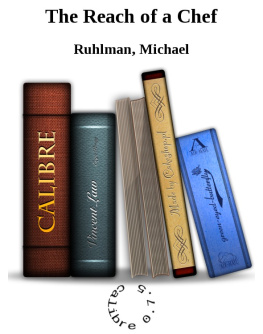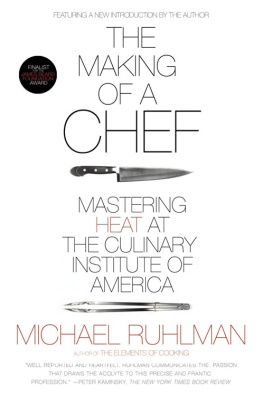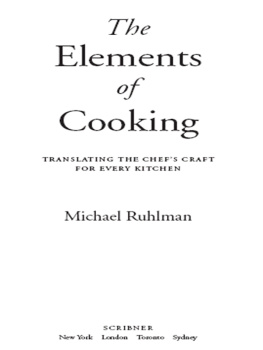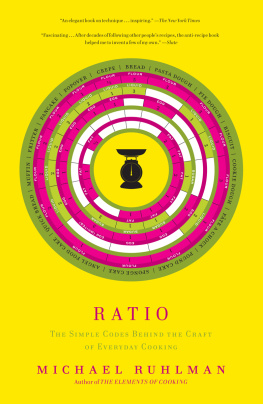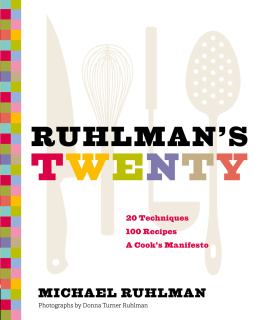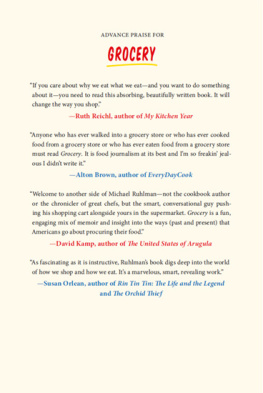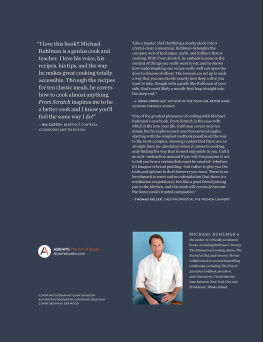Copyright 2016 by Ruhlman Enterprises, Inc.
Cover copyright 2016 by Hachette Book Group, Inc.
All rights reserved. In accordance with the U.S. Copyright Act of 1976, the scanning, uploading, and electronic sharing of any part of this book without the permission of the publisher is unlawful piracy and theft of the authors intellectual property. If you would like to use material from the book (other than for review purposes), prior written permission must be obtained by contacting the publisher at permissions@hbgusa.com. Thank you for your support of the authors rights.
Little, Brown is a division of Hachette Book Group, Inc. The Little, Brown name and logo are trademarks of Hachette Book Group, Inc.
The publisher is not responsible for websites (or their content) that are not owned by the publisher.
The Hachette Speakers Bureau provides a wide range of authors for speaking events. To find out more, go to hachetterspeakersbureau.com or call (866) 376-6591.
Ruhlmans How to Braise: Foolproof Techniques and Recipes for the Home Cook
Ruhlmans How to Roast: Foolproof Techniques and Recipes for the Home Cook
Egg: A Culinary Exploration of the Worlds Most Versatile Ingredient
The Book of Schmaltz: Love Song to a Forgotten Fat
Ruhlmans Twenty: 20 Techniques, 100 Recipes, A Cooks Manifesto
Ratio: The Simple Codes Behind the Craft of Everyday Cooking
The Elements of Cooking: Translating the Chefs Craft for Every Kitchen
The Reach of a Chef: Professional Cooks in the Age of Celebrity
The Soul of a Chef: The Journey Toward Perfection
The Making of a Chef: Mastering Heat at the Culinary Institute of America
Salumi: The Craft of Italian Dry Curing (with Brian Polcyn)
Charcuterie: The Craft of Salting, Smoking, and Curing (with Brian Polcyn)
Bouchon Bakery (with Thomas Keller and Sebastien Rouxel)
Ad Hoc at Home (with Thomas Keller)
Under Pressure: Cooking Sous Vide (with Thomas Keller)
Bouchon (with Thomas Keller)
The French Laundry Cookbook (with Thomas Keller)
A Return to Cooking (with Eric Ripert)
Michael Symons Live to Cook (with Michael Symon)
To ALR and JRR
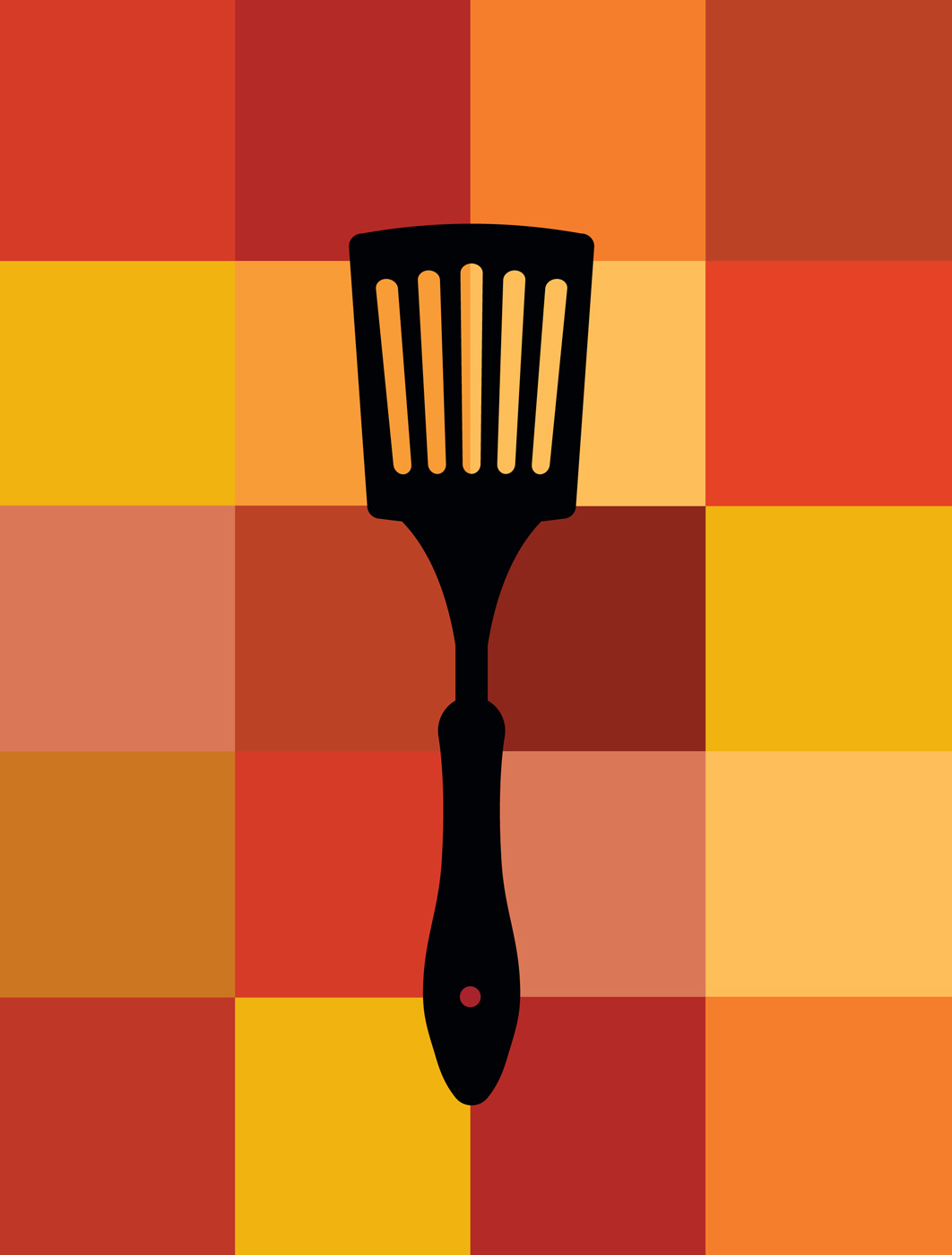
THE
HOT SEAT
ONE OF THE GREAT FACTS OF COOKING IS THAT ONE never stops learning how to do it: the knowledge of cooking runs as deep as the ocean.
I began this book thinking that the saut would be the simplest cooking technique to define, and yet I stumbled to articulate its precise meaning. Saut is among the most common words and techniques in the kitchen, but it is far more elusive than we recognize. The aim of this book is to help you master sauts hidden complexities and nuances, which will make you an all-around better cookand to eat some delicious food as we learn.
When I teach a cooking technique, I think back to the place I first learned it. This place is invariably my first cooking kitchen at the Culinary Institute of America, where my chef instructor, Michael Pardus, announced with the authority of an emperor: Saut means tender item cooked quickly over high heat. He paused, looked at our class, and said, You cannot saut a lamb shank.
That made sense. If you were to saut a lamb shank, you would end up with something tough and inedible. A heavily worked muscle, streaked with tendon and silverskin, sheathing a bone, takes hours in moist heat to become tendernot just a few minutes in a pan on the stove.
In French, saut means to jump. When you push a pan forward and its contentsEnglish peas, for instancerun up the sloping sides and hop into the air, you are jumping them. You are sauting them. This is how we picture a chef sautingusing the sloping sides of a pan to toss food into the air. Try that with a lamb shank!
Pardus also defined saut as the most demanding station in a busy restaurant kitchen. We were learning to become professional cooks, and Pardus described the saut station as the hot seat on the line, where the action is and where only the best cooks work.
At home, most cooks do not put out hundreds of plates of food in an evening, but the saut remains the most common of the primary techniques we use to apply heat to food. (The others are roasting, braising, grilling, and poaching.) Indeed, the saut is so common that we often overlook its countless nuances. But paying attention to the details makes everything we cook taste better.
I also learned about the saut from another revered and accomplished chef at the Culinary Institute: its president, Ferdinand Metz. A lifelong cook, he began his career in America in the kitchen of Le Pavillon (a kitchen run by Pierre Franey and employing a young Jacques Ppin). At the time of our interview, he had been the CIAs president for more than fifteen years. He told me about the basic cooking methods, and about the process of learning which method to apply to which foods. The goal is to learn them so well that you dont need to think about them, which allows the cooks mind to be open.
In sauting, he said, German accent intact, you could say, my God, there are probably ten different temperature levels. Surely the principle is to encase the meat or fish by caramelizing the protein, but there are different levels that depend on what it is Im doing. Some foods need a very harsh level; others need a very soft level that almost generates some moisture. It depends on what it is that you want to do. Whether its chicken or bacon, all those things require different levels.
Bacon? I remember thinking. You saut bacon? I always fried mine, but if Chef Metz said one sauted bacon, then one sauted bacon. Chicken and bacon represent two ends of the spectrum: chicken, a tender item, requires very high heat, while bacon, which is naturally tougher, requires gentle heat. And there my clean definition of sauthigh heat, tender itembegan to blur.
As I prepared to write this book, I made lunch for one of my best friendsscrambled eggs and sauted mushrooms, a toasted, buttered baguette, and a glass of white wine. Only then, as we talked about the book, did I realize what a tangled trick it was to define this most basic of cooking techniques. I tripped on my own words and eventually gave up and moved on to less complicated mattersthe United States Congress, I believe.


